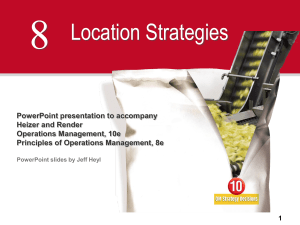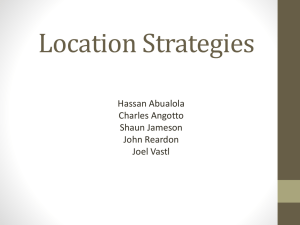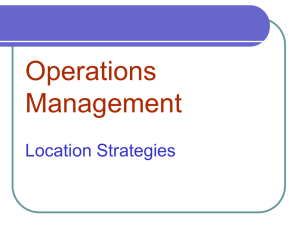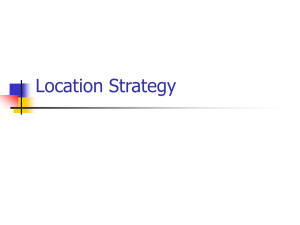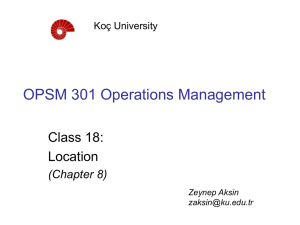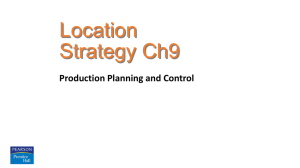CBA 390 (H/R) LOCATION STRATEGY – Ch 8
advertisement
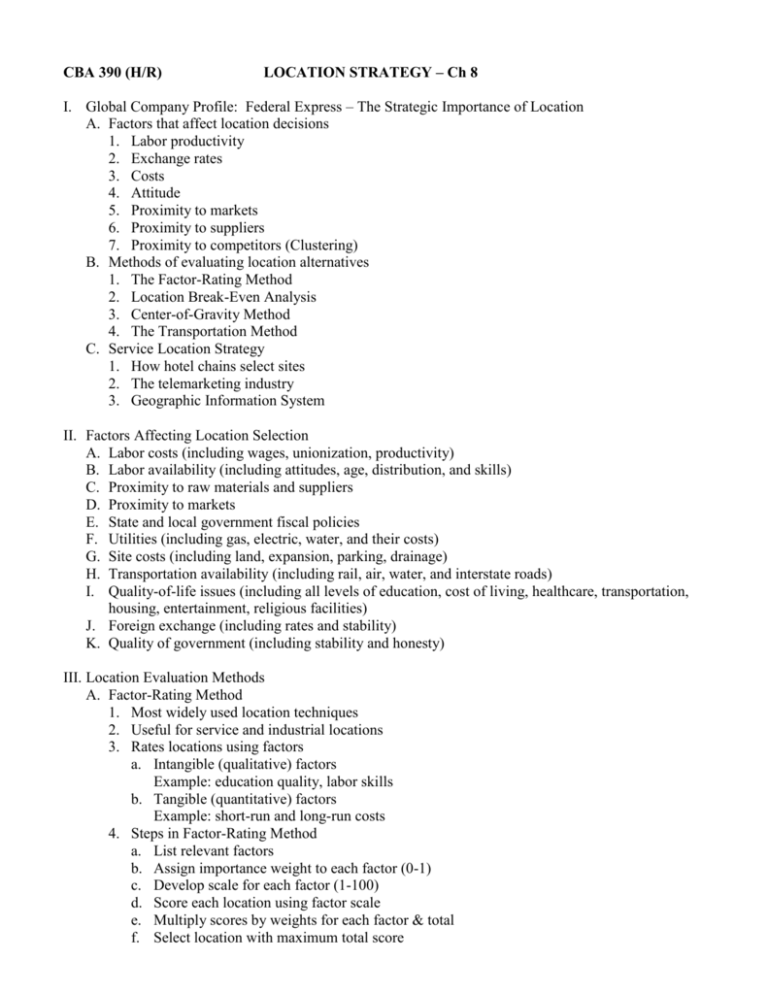
CBA 390 (H/R) LOCATION STRATEGY – Ch 8 I. Global Company Profile: Federal Express – The Strategic Importance of Location A. Factors that affect location decisions 1. Labor productivity 2. Exchange rates 3. Costs 4. Attitude 5. Proximity to markets 6. Proximity to suppliers 7. Proximity to competitors (Clustering) B. Methods of evaluating location alternatives 1. The Factor-Rating Method 2. Location Break-Even Analysis 3. Center-of-Gravity Method 4. The Transportation Method C. Service Location Strategy 1. How hotel chains select sites 2. The telemarketing industry 3. Geographic Information System II. Factors Affecting Location Selection A. Labor costs (including wages, unionization, productivity) B. Labor availability (including attitudes, age, distribution, and skills) C. Proximity to raw materials and suppliers D. Proximity to markets E. State and local government fiscal policies F. Utilities (including gas, electric, water, and their costs) G. Site costs (including land, expansion, parking, drainage) H. Transportation availability (including rail, air, water, and interstate roads) I. Quality-of-life issues (including all levels of education, cost of living, healthcare, transportation, housing, entertainment, religious facilities) J. Foreign exchange (including rates and stability) K. Quality of government (including stability and honesty) III. Location Evaluation Methods A. Factor-Rating Method 1. Most widely used location techniques 2. Useful for service and industrial locations 3. Rates locations using factors a. Intangible (qualitative) factors Example: education quality, labor skills b. Tangible (quantitative) factors Example: short-run and long-run costs 4. Steps in Factor-Rating Method a. List relevant factors b. Assign importance weight to each factor (0-1) c. Develop scale for each factor (1-100) d. Score each location using factor scale e. Multiply scores by weights for each factor & total f. Select location with maximum total score B. Location Break-Even Analysis 1. Method of Cost-Volume Analysis used for industrial locations 2. Steps: a. Determine fixed and variable costs for each location b. Plot total costs for each location c. Select location with lowest total cost for expected production volume - must be above break-even C. Center of Gravity Method 1. Finds location of single distribution center serving several destinations 2. Used primarily for services 3. Considers: a. Location of existing destinations Example: markets, retailers, etc. b. Volume to be shipped c. Shipping distance (or cost) - Shipping cost/unit/mile is constant 4. Steps in Center of Gravity Method a. Place existing locations on a coordinate grid - Grid has arbitrary origin and scale - Maintains relative distance b. Calculate X & Y coordinates for “center of gravity” - gives location of distribution center - minimizes transportation cost


